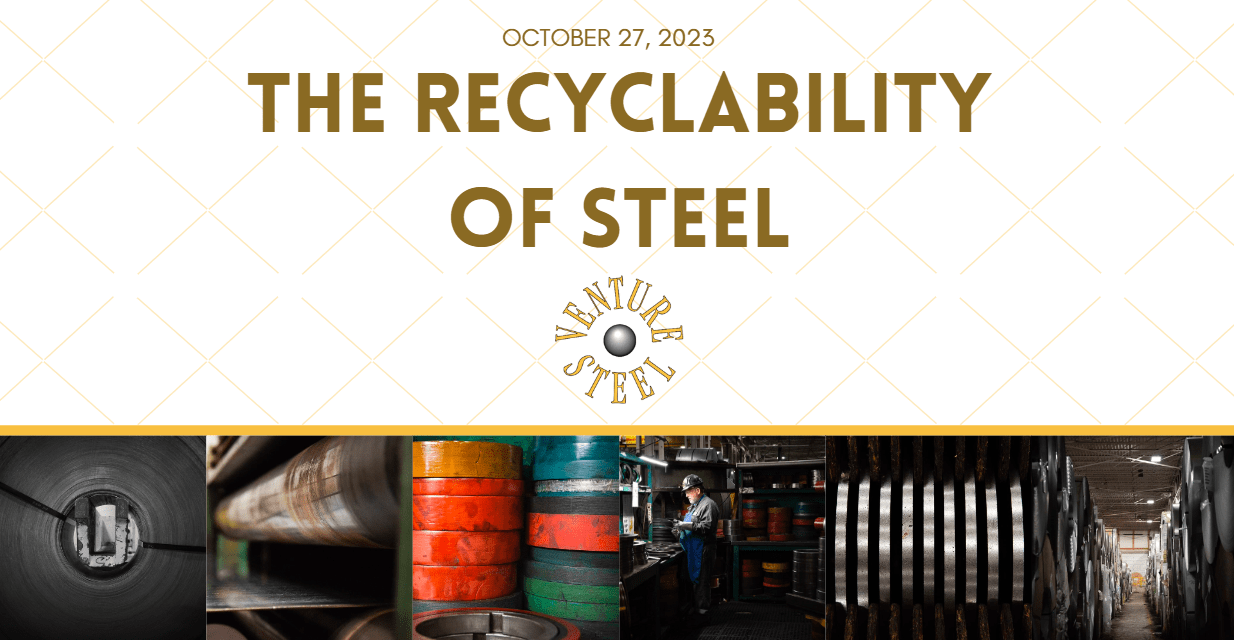In the global pursuit of sustainable and eco-friendly materials, steel stands out as a frontrunner. With its exceptional strength, versatility, and its remarkable recyclability, steel plays a pivotal role in the circular economy. As the world grapples with environmental challenges, understanding the recyclability of steel becomes paramount. This article delves into the world of steel recycling, exploring the eco-friendly journey from scrap to new steel products.
The Unbeatable Strength of Steel
Steel, a human-made alloy primarily composed of iron and carbon, is renowned for its exceptional properties. It’s a vital building block of our modern world, used in a myriad of applications from construction and automotive to packaging and appliances. Its unique combination of strength, durability, and malleability makes it an indispensable material.
The Eco-Friendly Aspect
One of steel’s most compelling features is its recyclability. Unlike many other materials, steel retains its inherent qualities even after recycling. This means that steel can be melted down and reformed into new products, without losing its structural integrity. This process not only conserves valuable resources but also reduces energy consumption and greenhouse gas emissions.
The Recycling Process
Steel recycling is a highly efficient and eco-friendly process, typically divided into several stages:
- Collection: Steel is collected from various sources, including discarded appliances, automobiles, construction materials, and industrial waste.
- Sorting: The collected steel is sorted into different categories, such as heavy steel, light steel, and shredded steel, to facilitate the recycling process.
- Shredding: The sorted steel is shredded into smaller pieces to prepare it for melting.
- Melting: The shredded steel is melted in large furnaces, reaching temperatures of up to 3,000 degrees Fahrenheit. The molten steel is then formed into new shapes.
- Refining: The molten steel undergoes refining to remove impurities and ensure the final product meets quality standards.
- Forming: Once purified, the steel can be formed into new products, ranging from beams and pipes to cans and automobiles.
The Environmental Benefits
The recyclability of steel brings about numerous environmental benefits. Steel significantly contributes to energy conservation as the process of recycling steel consumes far less energy than its production from raw materials. This heightened energy efficiency, in turn, leads to significant reductions in carbon emissions, making it a greener alternative. Additionally, steel recycling aids in resource conservation by decreasing the demand for virgin iron ore and coal, which contributes to the preservation of natural resources. This practice also helps in reducing landfill waste, as recycling steel ensures that less of it ends up in landfills. Overall, the entire steel recycling process, from collection to melting and refining, results in fewer greenhouse gas emissions when compared to traditional steel production methods, making it an eco-friendly choice for the environment.
Economic Implications
The recycling of steel also has positive economic effects. It creates job opportunities in the collection, sorting, and processing stages, contributing to the growth of a sustainable green economy. Moreover, by reducing the need for importing raw materials, steel recycling can improve a nation’s trade balance.
Conclusion
The recyclability of steel is a remarkable journey from scrap to new life, showcasing how a single material can contribute to environmental conservation, economic growth, and resource efficiency. As the world continues its sustainable quest, steel will undoubtedly remain a green backbone, supporting a circular economy and a more environmentally friendly future. With ongoing innovations and increasing awareness, the recyclability of steel will continue to evolve, making it a shining example of sustainable material use.




